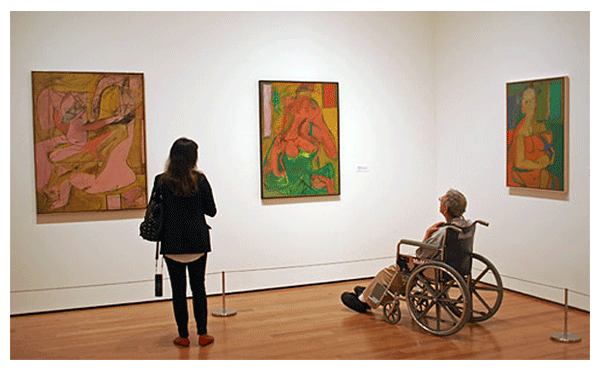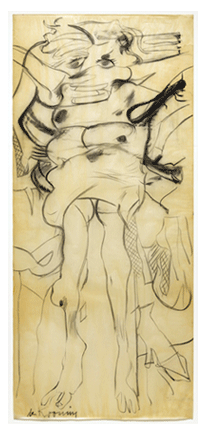- Publisher's Note
- Editorial
- Sixteen printmakers talk about their work
- The Imprinted Body
- A Chai with Vijay Bagodi
- The Wood Engravings of Haren Das
- A Physical Perception of Matter
- Feminine Worlds
- A Rich Theater of Visuality
- A Medley of Tradition
- Decontextualizing Reality
- Printmaking and/as the New Media
- Conversations with Woodcut
- Persistence of Anomaly
- Sakti Burman - In Paris with Love
- Lalu Prasad Shaw: The Journey Man
- Future Calculus
- A Note on Prints, Reproductions and Editions
- A Basic Glossary of Print Media
- The Art of Dissent: Ming Loyalist Art
- Vishnu: Hinduism's Blue-Skinned Savior at the Brooklyn Museum of Art
- Twelfth edition of Toronto International Art Fair
- Vintage Photographs of the Maharajas
- Göteborg International Biennial
- A Museum, a Retrospect & a Centenary for K.K. Hebbar:
- Recent and Retrospective: Showcase of Shuvaprasanna's Work
- "I Don't Paint To Live, I Live To Paint": Willem de Kooning
- Salvador Dali Retrospective: I am Delirious, Therefore I am
- To Be Just and To Be Fair
- Census of Senses: Investigating/Re-Producing Senses?
- Between Worlds: The Chittaprosad Retrospective
- Awesomely Artistic
- Random Strokes
- Counter Forces in The Printmaking Arena and how to Counter them
- Shift in focus in the Indian Art Market
- What Happened and What's Forthcoming
- Art Bengaluru
- Mumbai Art Sighting
- Musings from Chennai
- Art Events Kolkata
- Previews
- In the News
ART news & views
"I Don't Paint To Live, I Live To Paint": Willem de Kooning
Volume: 4 Issue No: 21 Month: 10 Year: 2011
Review
by Natasha Sikdar

New York: The Museum of Modern Art presented, de Kooning:  A Retrospective at the Rene d'Harnoncourt Exhibition Galleries organized by John Elderfield, Chief Curator Emeritus of Painting and Sculpture, The Museum of Modern Art. The show started on September 18, 2011 and runs through January 9, 2012. The show provides an opportunity to study the artist's development over seven decades, beginning with his early academic works in 1926 and concluding with his final, abstract paintings of the late 1980s.
A Retrospective at the Rene d'Harnoncourt Exhibition Galleries organized by John Elderfield, Chief Curator Emeritus of Painting and Sculpture, The Museum of Modern Art. The show started on September 18, 2011 and runs through January 9, 2012. The show provides an opportunity to study the artist's development over seven decades, beginning with his early academic works in 1926 and concluding with his final, abstract paintings of the late 1980s.
American artist Willem de Kooning was born in Rotterdam in the Netherlands in 1904. He left school when he was only twelve to apprentice at a commercial design and decorating firm. Later he studied at Rotterdam Academy of Fine Arts and Techniques and during this period, he grew interest in Jugendstil, the German variant of Art Nouveau. Inspired by Ingres, Rubens and Rembrandt, De Kooning is thought to have possessed the great facility and refined techniques of painters in the New York School. He was one of the very foremost artists of the New York School for his revolutionary importance to modern art.
The show has brought together about 200 works from public and private collections including paintings, sculptures, drawings, and prints. Among the works on view are the artist's most famous, landmark paintings Pink Angels (c. 1945), Excavation (1950), and the well-known third Woman series (195053), his figurative  paintings of the early 1940s and black-and-white compositions of 194849, the urban abstractions of the mid 1950s and the artist's return to figuration in the 1960s. Also included in the show is de Kooning's famous yet rarely seen theatrical backdrop, the 17-foot-square Labyrinth (1946).
paintings of the early 1940s and black-and-white compositions of 194849, the urban abstractions of the mid 1950s and the artist's return to figuration in the 1960s. Also included in the show is de Kooning's famous yet rarely seen theatrical backdrop, the 17-foot-square Labyrinth (1946).
The exhibition follows de Kooning's career serially in seven galleries. It begins with two early academic works, Still Life (1916/17) and Still Life (Bowl, Pitcher and Jug) (c. 1921). Following these early works is a survey of paintings he made in New York from around 1930 to 1945, ranging from early abstractions, such as Untitled (The Cow Jumps Over the Moon) (193738), to the first series of Woman paintings (1940-46). Although he came to embody the popular image of the macho, hard-drinking artist - and his most famous Women series seems painted with angry vigor - de Kooning approached his art with careful thought and was considered one of the most knowledgeable among the artists associated with the New York School. Inspired by Arshile Gorky's canvases, Old Master portraits, and the work of Henri Matisse, Joan Miró, and Pablo Picasso, he fashioned an individual style in which limbs in the figure paintings resemble biomorphic shapes in the abstractions; forms in the abstractions resemble torsos and breasts; and bold, geometric shapes anchor both kinds of paintings. His major works- Pink Lady (c. 1944) and Pink Angels (c. 1945) are also displayed.
de Kooning was the most prominent and celebrated of the Abstract Expressionist painters. And the exhibition demonstrates that de Kooning never followed any single, narrowly defined path,  repudiating the modernist view of art as developing towards an increasingly refined, allover abstraction to find continuity in continual change. He once said, "I'm not someone who's ever said anything definitive about his work. In my life also I have very little fixed form. I can change overnight".
repudiating the modernist view of art as developing towards an increasingly refined, allover abstraction to find continuity in continual change. He once said, "I'm not someone who's ever said anything definitive about his work. In my life also I have very little fixed form. I can change overnight".
His pictures characterize the energetic gestural style of the movement and he, perhaps, did more than any of his contemporaries to develop a radically abstract style of painting that fused Cubism, Surrealism and Expressionism. Although he established his reputation with a series of entirely abstract pictures, he felt a strong pull towards traditional subjects and would eventually become most famous for his pictures of women, which he painted in spells throughout his life. Later he turned to landscapes, which he continued to paint even into his eighties, when his mind was significantly impaired by Alzheimer's disease. He died in 1997, but until his death, he painted since he didn't paint to live, but lived to paint!
